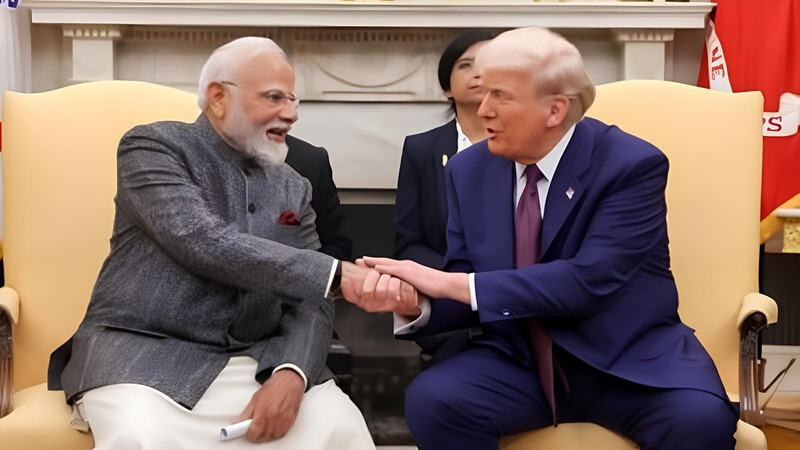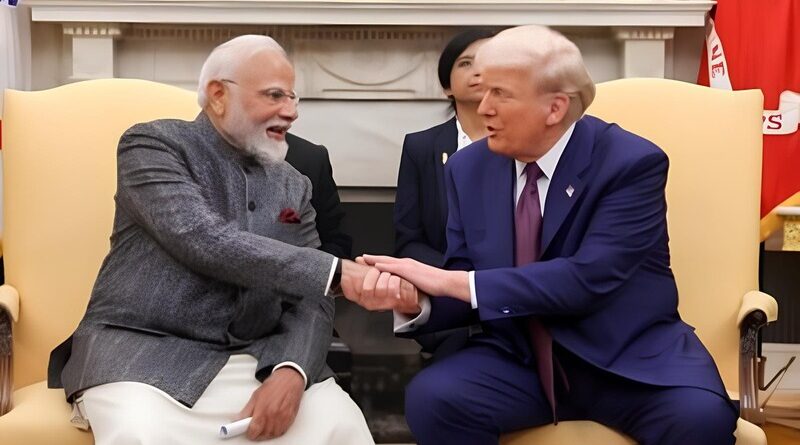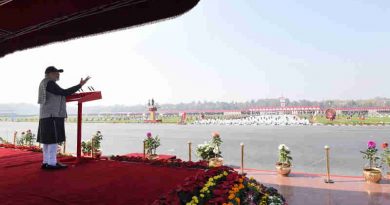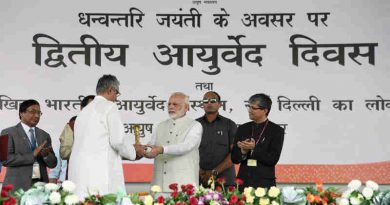India-U.S. Strengthen Ties with COMPACT Initiative

India-U.S. Strengthen Ties with COMPACT Initiative
The leaders set an ambitious goal of expanding bilateral trade to $500 billion by 2030 through a Bilateral Trade Agreement (BTA) to be negotiated by fall 2025.
The President of the United States, Donald J. Trump, and the Prime Minister of India, Narendra Modi, reaffirmed their commitment to the India-U.S. Comprehensive Global Strategic Partnership during Modi’s official working visit to Washington, D.C., on February 13.
The two leaders launched the U.S.-India COMPACT (Catalyzing Opportunities for Military Partnership, Accelerated Commerce & Technology) for the 21st Century, a transformative initiative aimed at enhancing defense, trade, energy, and technology collaboration.
The leaders announced plans to sign a new ten-year Framework for the U.S.-India Major Defense Partnership, further strengthening military ties. The U.S. committed to expanding defense sales, including co-production of Javelin Anti-Tank Guided Missiles and Stryker Infantry Combat Vehicles in India. Additionally, India will procure six more P-8I Maritime Patrol aircraft to bolster its maritime security.
A new Autonomous Systems Industry Alliance (ASIA) was introduced to promote advanced AI-enabled maritime systems. Enhanced military training exercises, including the upcoming Tiger Triumph tri-service drill, will elevate joint operational capabilities. The U.S. is also reviewing its policy on transferring fifth-generation fighter jets and undersea systems to India.
The leaders set an ambitious goal of expanding bilateral trade to $500 billion by 2030 through a Bilateral Trade Agreement (BTA) to be negotiated by fall 2025. Recent tariff reductions on U.S. goods in India and improved market access for agricultural products were welcomed. The U.S. acknowledged India’s investments in aluminum, steel, battery materials, and pharmaceuticals, which support over 3,000 American jobs.
Recognizing the role of energy in economic stability, both countries reaffirmed their Energy Security Partnership, with the U.S. supporting India’s full membership in the International Energy Agency. Plans to establish strategic petroleum reserves and boost U.S.-India hydrocarbon trade were emphasized.
The leaders committed to realizing the U.S.-India 123 Civil Nuclear Agreement by advancing the localization and technology transfer of U.S.-designed nuclear reactors. The Indian government’s amendments to nuclear liability laws were seen as a step toward unlocking large-scale nuclear projects.
A new U.S.-India TRUST (Transforming the Relationship Utilizing Strategic Technology) Initiative will drive collaborations in AI, semiconductors, quantum computing, space, and biotech. Plans for a U.S.-India AI Infrastructure Roadmap and increased investment in data centers, semiconductor manufacturing, and pharmaceutical supply chains were announced.
In space cooperation, NASA and ISRO will send the first Indian astronaut to the ISS, while the NISAR mission will map Earth’s surface changes. The launch of INDUS Innovation aims to advance technology partnerships in defense, energy, and space industries.
Both leaders reaffirmed their commitment to a free and open Indo-Pacific, strengthening maritime security cooperation. India’s role in the Combined Maritime Forces will help secure sea lanes in the Arabian Sea. The Indian Ocean Strategic Venture was launched to promote economic and security investments in the region.
Counterterrorism efforts were prioritized, with commitments to eliminate terrorist safe havens and ensure justice for victims of attacks such as 26/11 Mumbai. The U.S. approved the extradition of Tahawwur Rana to India, calling for stronger action against cross-border terrorism.
Recognizing the contribution of over 300,000 Indian students to the U.S. economy, the leaders agreed to streamline legal mobility frameworks and academic collaborations. They also pledged to combat illegal immigration and human trafficking.
President Trump and Prime Minister Modi emphasized their shared vision for a prosperous future, with high-level engagements to sustain momentum in the U.S.-India partnership.
Note: This news story has been summarized from a PIB press release dated February 14, 2025 with the help of ChatGPT.





